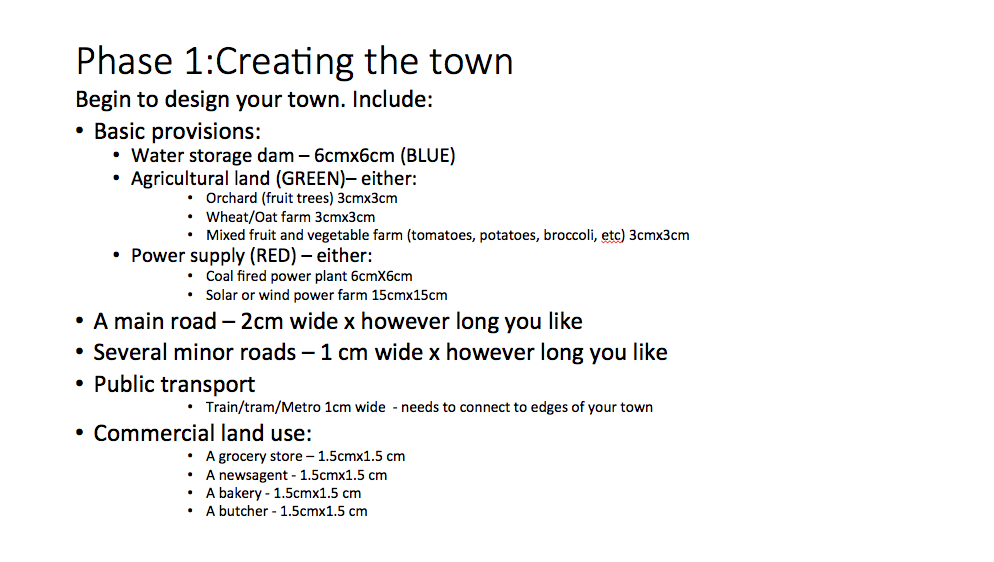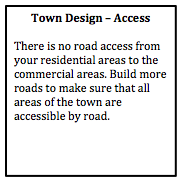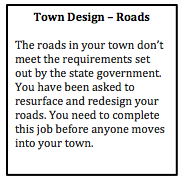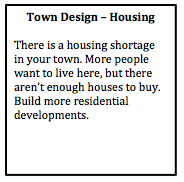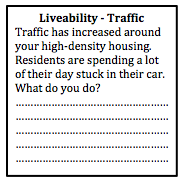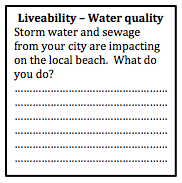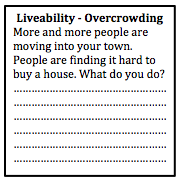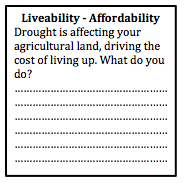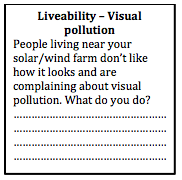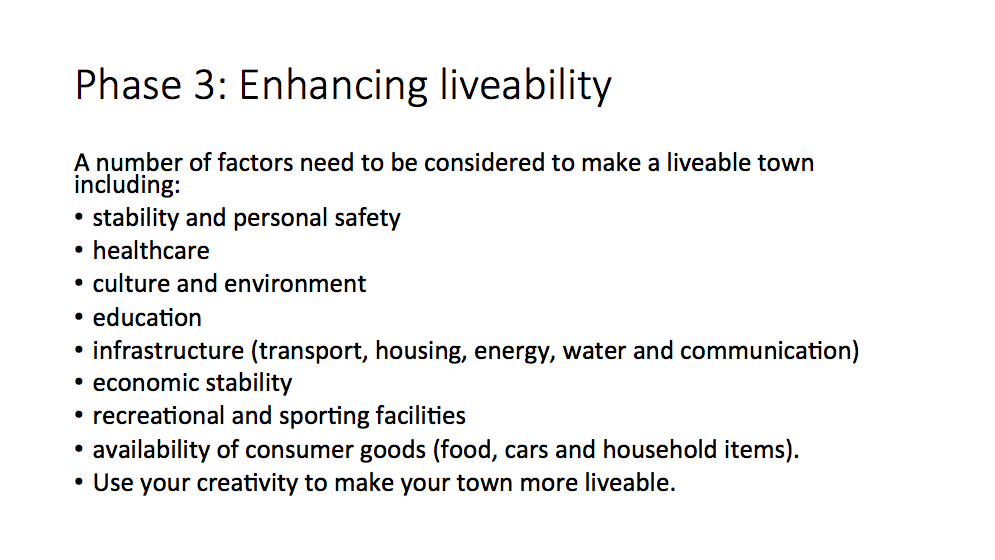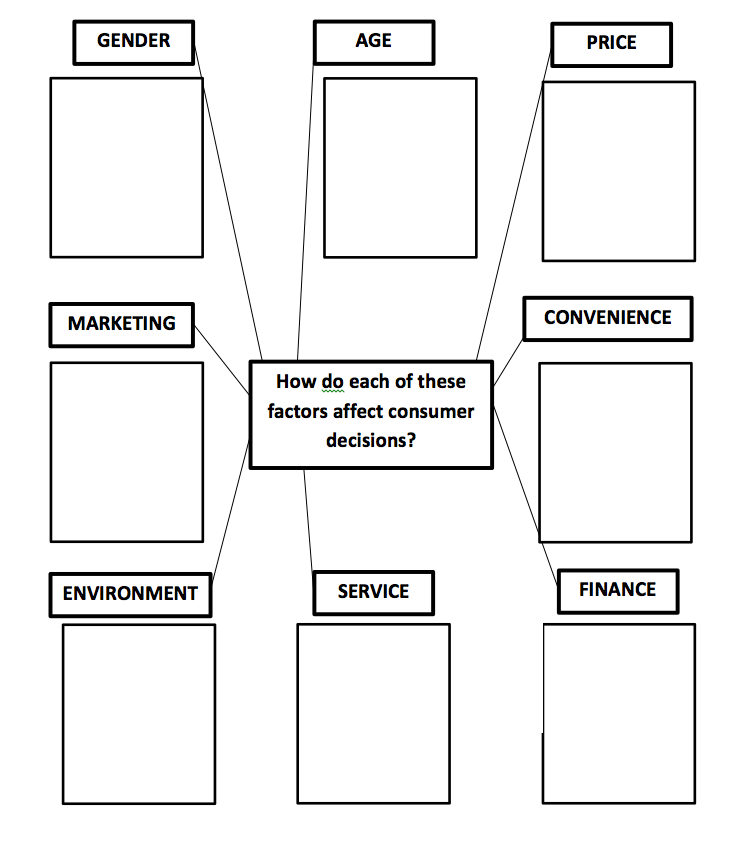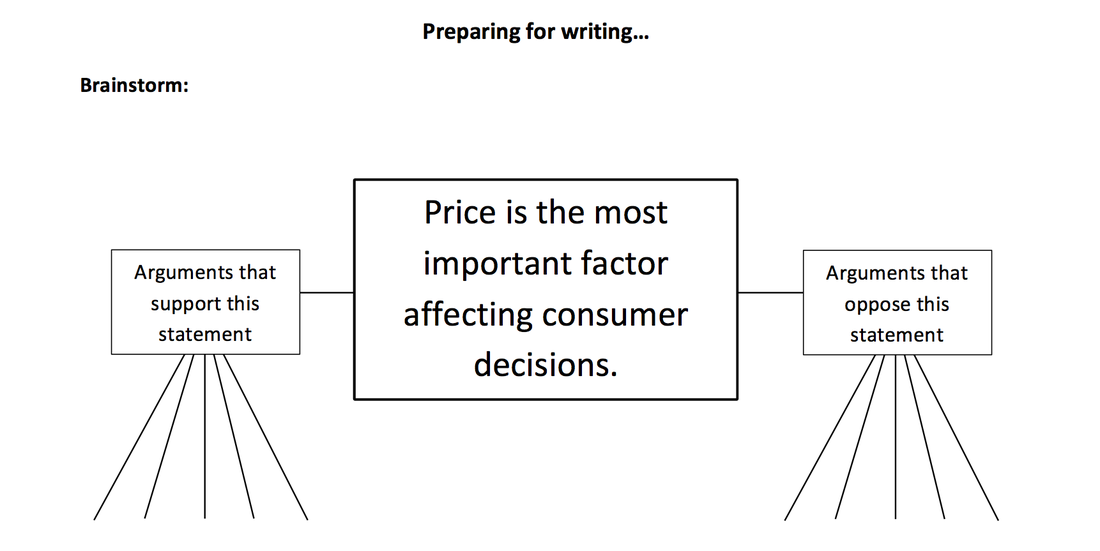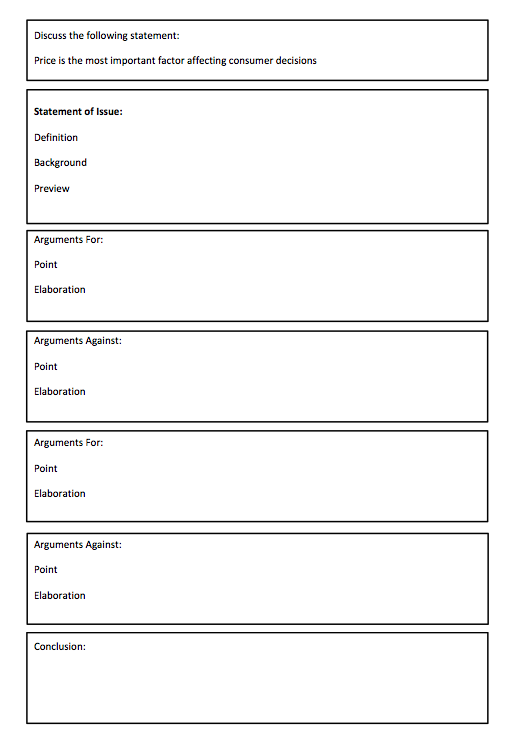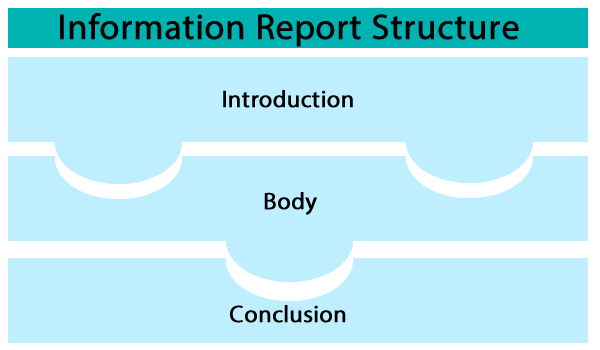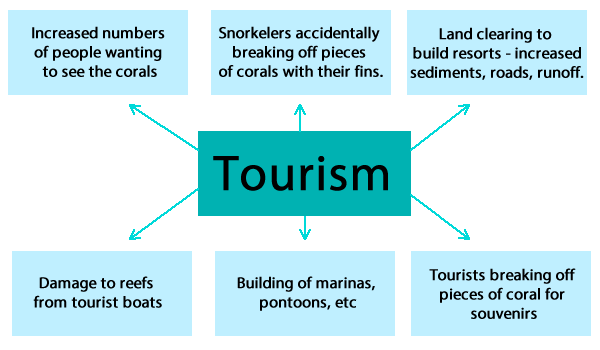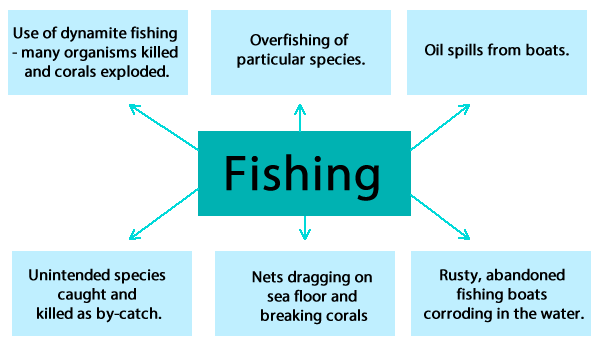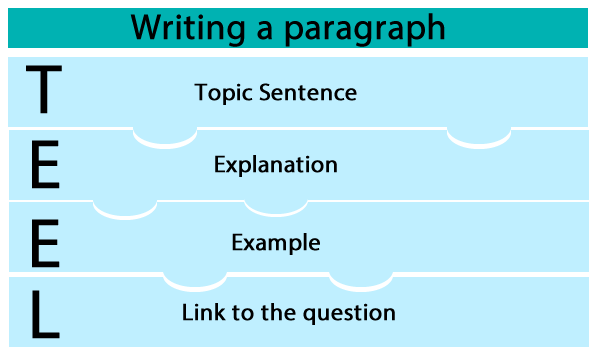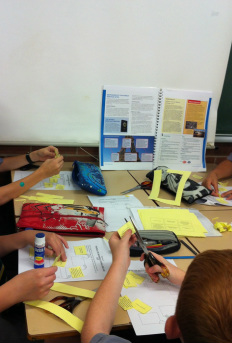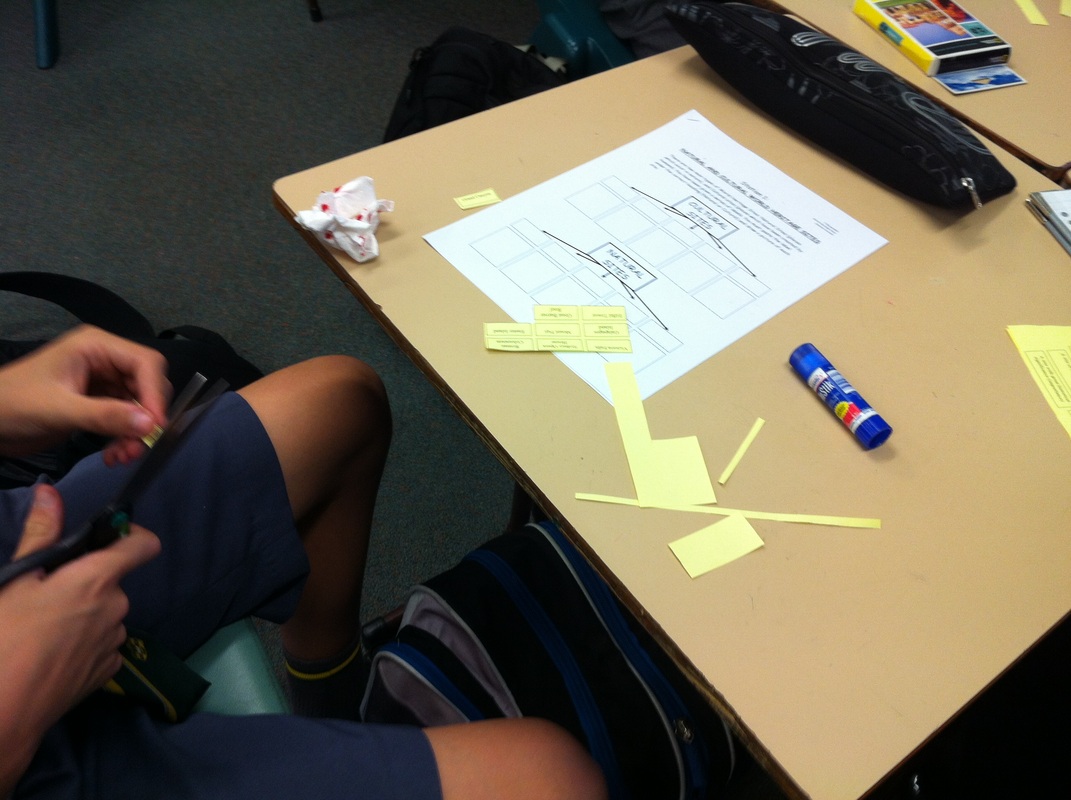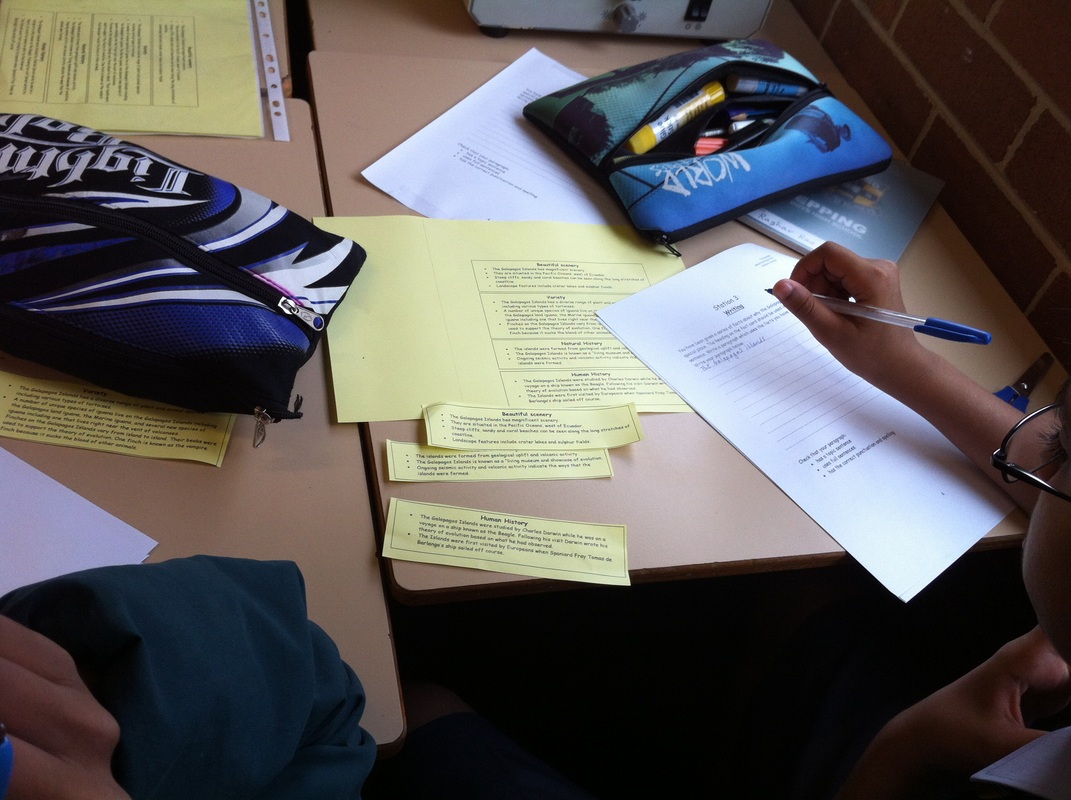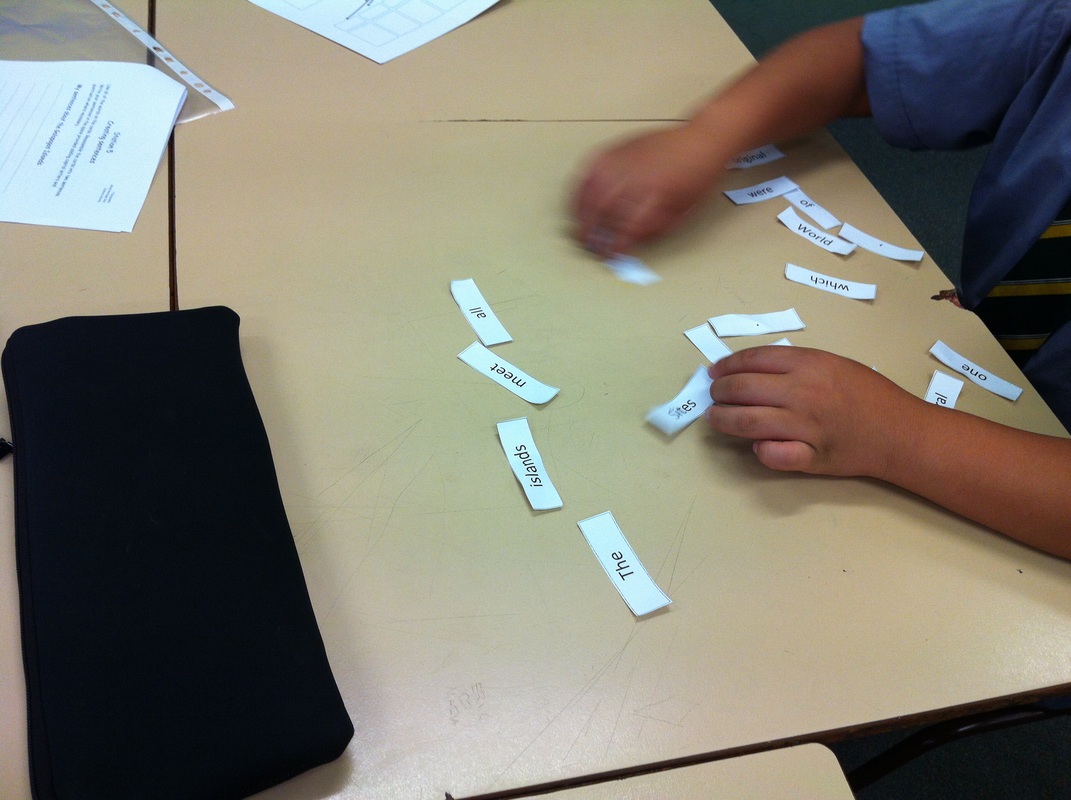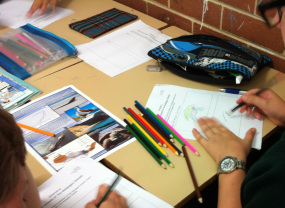|
The aim of this series of lessons is to allow students to apply their understanding of Liveability to a city design task. Students work in groups of 2-3 to design a small town, as the activity progresses they will reflect on what they have learnt in the Place and Liveability topic and apply it to their town. Phase 1: Design your town The first phase of this task involves designing the layout of the town. This will involve the initial road layout, agricultural land uses, some initial commercial land uses, power supply, and water storage. Provide some student choices so that you can provide a few variations in the first round of feedback. Provide students with a base page ( it may or may not have some geographical features on it such as mountains, coastline, rivers, etc). Also provide students with some blank, coloured pieces of paper, or you can copy the templates onto coloured paper - green (agricultural land), blue (water storage), pink (commercial), red (power supply), grey (roads).
Design feedback This is an opportunity to provide some initial feedback to ensure the students get the basics right. Design the feedback so that it refers to the students as though they are members of the local council. For example, “The roads in your town don’t meet the requirements set out by the state government. You have been asked to resurface and redesign your roads. You need to complete this job before anyone moves into your town.” Phase 2: Moving in... In the second phase of the task, students design the residential layout and density of the town. By placing a relatively small limit on the number of dwellings students have to focus on the layout of the town in the initial phases.
Town plan scenarios Provide students with some scenarios that will allow them to start to think about the liveability of their towns. By this stage some of the groups' conversations will have already addressed aspects of liveability, but they may not have actually considered in much depth. Students are required to write a brief description of how they addressed each scenario. Phase 3: Enhancing liveability Students will need to respond to the scenarios above, and should have started to consider some of the additional needs of a community. As a class discuss the content related to liveability that you have already covered in class, and then provide students with time to make changes to their town plan. Phase 3: Liveability Students spend some time reviewing their towns and providing initiatives and strategies to make their town more liveable. They also need to address the scenarios provided by the teacher. Writing task Students need to write a description of how their town addresses different aspects of sustainability. Peer feedback Students rotate around to visit other groups' town. They provide feedback on the liveability of each town and make suggestion on how to improve liveability for each town. Next... refer to Designing a Liveable City - Part 2.
1 Comment
Discuss the following statement: Price is the most important factor affecting consumer decisions How do you write a discussion? Purpose: To examine issues from more than one perspective and make recommendations based on evidence. For example, are there other factors that also influence consumer decision? Structure: Opening statement presenting the issue Arguments, for and against, including evidence for different points of view (elaboration) Concluding statement and (optional) recommendation Language features: Use of words and phrases such as, however, thus, in addition, similarly, and in contrast. Use terms and phrases with strong modality for your best arguments, e.g. must, should. Use terms and phrases with weaker modality for weaker arguments, e.g. perhaps, may. Preparing for writing: Use the writing scaffold to structure your response.
My Year 7 class are currently learning about coral reefs. We have already covered a fair bit of the content, and I thought it might be a good time to cover some specific literacy skills. I wanted to get the students to write a report on threats to coral reefs. If I was to tell my class this directly a few of them could get straight onto the task, however, most of the class would find this task quite daunting. In the first part of the lesson I showed a short video about threats to coral reefs. The students were asked to write down any threats to reefs as they were discussed, I also wrote dot points on the board. We ended up with a fairly comprehensive list of threats, without being overly technical. When the video was finished, we discussed the main themes from the video. As a class, we examined the dot points on the board and tried to categorise the dot points into themes. We put different symbols next to the points to indicate themes. For example, one of the themes was tourism, so dot points such as snorkellers breaking coral, forest cleared to build resorts and damage to reefs from tourist boats, were all allocated the same symbol. We ended up with about about 5 or 6 themes, each with several associated dot points. A few examples: After discussion, we wrote an introduction as a class. We underlined the key terms in the question and discussed what they meant. The students offered up a range of possible sentences that we could use in our introduction. We settled on a few that were general, used some vaguely sophisticated language and key terms from the question. We discussed the key elements of a paragraph. We have completed a similar task earlier in the year. It took a little while for the class to remember the TEEL structure but eventually one of the students pulled out a handout from Visual Arts. They are clearly doing something similar in VA, but it was surprising that they didn't automatically transfer the information from one subject to another, or remember covering it in Geography before. It was just another reminder how often we need to reinforce these literacy skills. I suggested that we should write our first paragraph about the impact of tourism on coral reefs. Each student had to write their own topic sentence. We discussed that the topic sentence needed to be a general statement that gave the reader a sense of what the rest of the paragraph would be about. I asked a few of the students to write their topic sentences on the board and we discussed the pros and cons of each example. Students made suggestions about how to improve the topic sentences.
We repeated the process for the other sentences required for the first paragraphs. The second body paragraph was on the impact of fishing on coral reefs. The class shared their topic sentences again. They were then required to write the rest of the paragraph by themselves without assistance. A few students were asked to read out their paragraphs after the students had been given sufficient time. I gave the students two other topics to write paragraphs about without assistance: removal of mangroves and climate change. We discussed the requirements of a conclusion: refocus the reader on the question, bring together all of the main points of the report and provide a brief summary of the report. Students offered a few appropriate sentences to include in their conclusions and then discussed the pros and cons of each sentence. Student were then required to write their own conclusion. Students were given 5 minutes to re-read their work and make any edits. It was suggested that they check their work for capital letters at the beginning of sentences and for proper nouns, consistent use of tense and use of appropriate key terms. The list of criteria could be changed easily based on the students and their needs. See the student activities. I think teachers often find it hard to find interesting ways to integrate literacy into lessons. You’ll still occasionally hear discussion of “watering down the curriculum”, but I think these days most people are onboard with the idea that literacy and numeracy are the responsibility of all teachers. It is great to see that this idea has been cemented in the Australian Curriculum in the General Capabilities, and in the new NSW syllabuses in “Learning across the curriculum” content. A few years ago, I developed a lesson template that was based on a stations activity rotation. This was part of a much bigger project with a team of great colleagues, that involved developing a lesson sequence based around literacy needs. More on that another day… This activity integrated literacy based activities with the content of World Heritage Sites. Students are placed in groups of 4-5, depending on how big your class is. It has six stations that the students move around to after a set time (about 7-8 minutes give or take).
Station 4
Students are given a series of words, each on a separate piece of paper. They must use all of the words provided, and arrange them in the correct order to make a sentence. They must also correctly place the punctuation marks. Station 6
I usually find that students quite enjoy this lesson. I know it isn’t brain surgery, but it covers some of the content and addresses literacy in several different ways. The activities can obviously be changed to suit the needs of your particular students. As I teach all boys, the fact that the activity requires a lot of movement really engages them, and I actually enjoy how this lesson unfolds.
|
Categories
All
Archives
May 2024
|
||||||||||||||||||||||||||||||||||||||||||||||||||||||||||||||||
